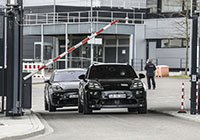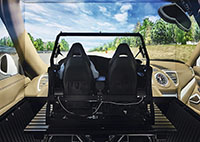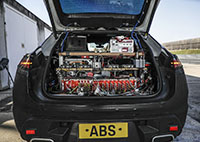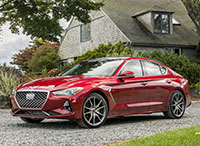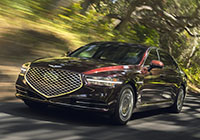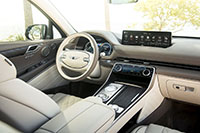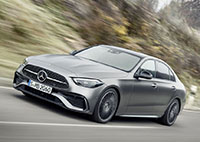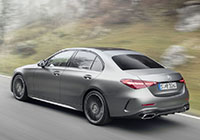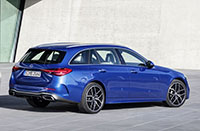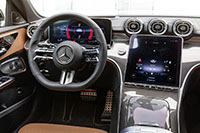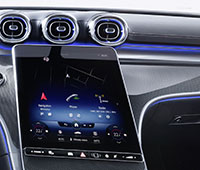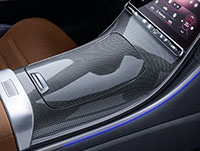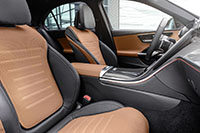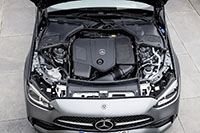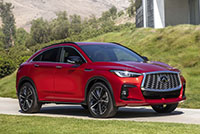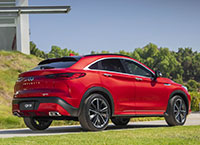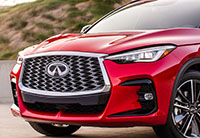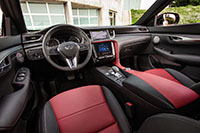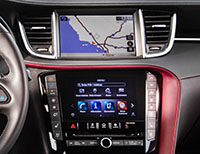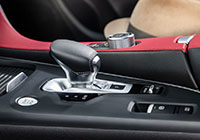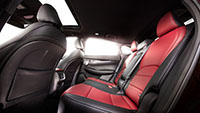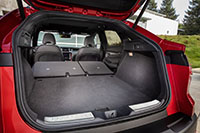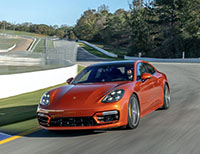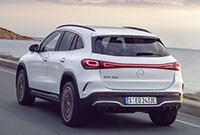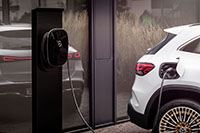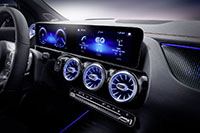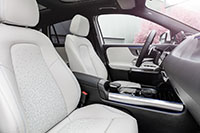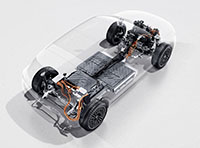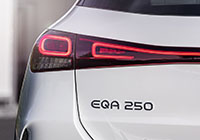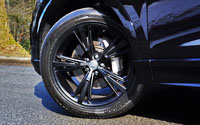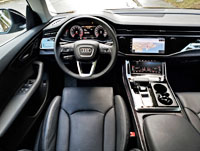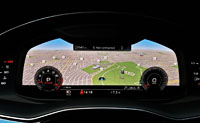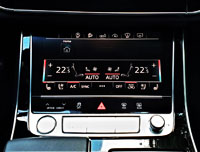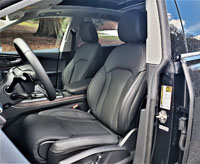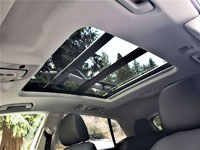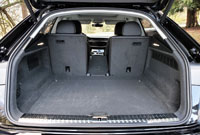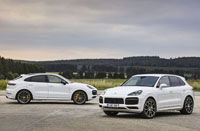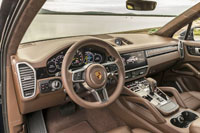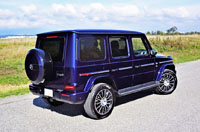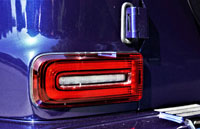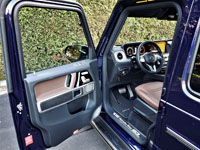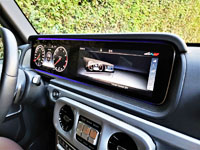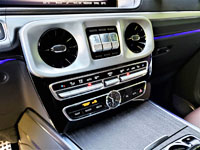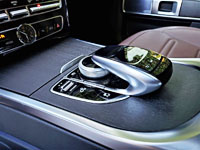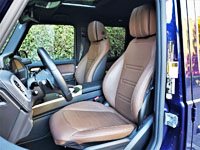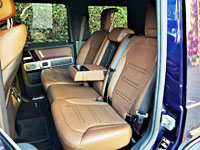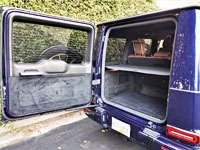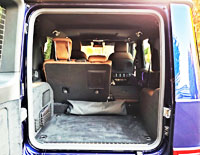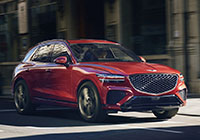
To say Hyundai’s new Genesis luxury brand is on a roll would be quite the understatement, being that it began with just one full-size G90 flagship luxury sedan at the close of 2015, added its mid-size G80 sport-luxury sedan in early 2016, and followed up with the compact G70 sport sedan in 2017. Additionally, the more important mid-size GV80 luxury SUV arrived just last year, while what might become its top seller, the compact GV70 sport-luxury SUV, is just starting to arrive at dealers now.
It helped that Genesis’ earliest two models were already in production as the Hyundai-branded Equus and Genesis Sedan, one of two cars, including the Genesis Coupe, that carried the new brand’s name for eight years before its steering wheel hub and trunk lid removed Hyundai’s stylized “H” for Genesis wings (which were already displayed proudly above the front grille), and “GENESIS” lettering was replaced by G80 badging at back.
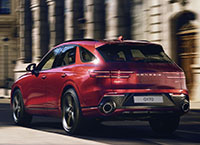
Since then, all three early cars have been updated with fresh new styling, including a new pentagonal “Crest Grille” plus double-slatted LED “Quad Lamps” fore and aft, and heavily reworked interiors, resulting in a wholly cohesive design language to at least rival its key Japanese rivals, while the new G80 will soon be available with a two-motor pure electric drive system.
Granted, Genesis has a long way to go before it starts matching Lexus sales in Canada, with 1,737 units sold at the close of Q2 2021 compared to 12,405, but it’s closing in on Infiniti’s 3,189 total after the first six months of this year, and has already bypassed Jaguar’s 1,204 deliveries and Alfa Romeo’s 434. Lincoln is also in target with only 3,629 units sold as June ended, and this comes before any GV70 deliveries get added to the Genesis mix.

Interestingly, the sporty 2022 GV70 is not the least expensive compact luxury SUV on the market, a tactic often chosen by upstart luxury brands trying to attract new buyers by providing all the bells and whistles for a better price. Instead, the new model gets an all-inclusive price of $49,000, including freight and delivery fees (or $49,150 all-in as shown on GV70’s retail website landing page).
The new GV70, in fact, is ninth most expensive in a compact premium crossover segment that’s now 16 competitors strong. That places it near the mid-point, although it’s important to point out that most competitors don’t include destination/delivery fees or the $100 A/C tax in their advertised prices. Therefore, after factoring in the latter (and using an average of $2,500 for those brands that made it difficult to locate this information on their retail websites), the new GV70’s retail price is more competitive thanks to a ranking of seventh most affordable.
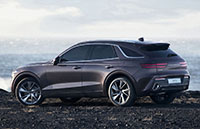
By the numbers, alternatives priced lower than the new GV70 include the $44,298 Cadillac XT5 (plus $2,500 in fees for a total of $46,798), $44,505 Acura RDX (plus $2,475 in fees for a total of $46,980), $44,600 Lexus NX (couldn’t find their fees so adding $2,500 for $47,100), $45,495 Infiniti QX50 (plus $2,220 for $47,415), $45,200 Lincoln Corsair (plus $2,250 for $47,450), and lastly the $46,550 Audi Q5 (plus $2,395 for $48,945).
Genesis’ willingness to let eight brands advertise lower pricing in such a highly competitive market is a bold move, but it just might be calculated one, in that its mid-pack pricing could cause loftier perceptions of its brand identity, and therefore leave cheaper alternatives looking like they’re not good enough. After all, parent company Hyundai has long been seen as a value brand amongst its more established mainstream rivals, and while that’s changing because of impressive entries such as the Genesis and Equus models that came before, plus today’s Santa Fe, Palisade and the list goes on, it’s still important for Genesis to not allow such a more-for-less mindset and instead develop its own brand desirability.
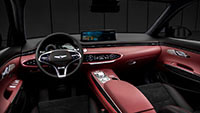
On this note, the new 2022 GV70 is more affordable than the $48,500 Volvo XC60 after adding its fees (plus $2,615 for $51,115 in total), as well as Land Rover’s $49,900 Discovery Sport (plus $2,726 in fees for $52,626), plus the $49,900 Mercedes-Benz GLC (not shown on retail site so adding $2,500 for $52,400). Likewise, the BMW X3 starts at $52,550 (plus $2,245 for $54,795), the Tesla Model Y at $55,000 including its $1,300 freight fee (although the least expensive Performance model currently offered on their retail site goes for $69,990), the Alfa Romeo Stelvio at $55,190 (plus fees ranging from $1,995 to $2,695 for a maximum base price of $57,885), the Porsche Macan at $57,800 (plus $1,600 for $59,400), the Jaguar F-Pace at $60,350 (plus $2,826 for $63,126), and finally Land Rover’s Range Rover Velar at $63,500 (plus $2,826 for $66,326).

An approximate $20,000 price gap, from least expensive to priciest, is a sizeable chasm for compact luxury SUV shoppers to cross, but it should be mentioned that any one of the compact luxury utilities named above comes close to the revered Velar’s starting price when amped up with options, while even the cheapest on this list can go much higher. What’s more, some boast more equipment in their various base trims than others, not to mention stronger performance, greater interior room, etcetera. In other words, it’s not a direct apples-for-apples comparison.
For around $50k, the 2022 GV70 2.5T Select AWD arrives standard with Quad LED headlights, LED tail lamps, 18-inch alloys, proximity-sensing keyless access with pushbutton start/stop and remote engine start, fingerprint authentication, an 8.0-inch LCD digital gauge cluster, a big 14.5-inch HD multimedia display incorporating Android Auto and Apple CarPlay smartphone integration, navigation, wireless device charging, a 12-way powered driver’s seat with power lumbar, an eight-way power front passenger seat, heated front seats, rear occupant alert, a hands-free tailgate, plus more.
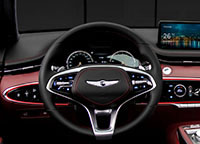
Additionally, the GV70’s standard Highway Driving Assist II driver assistance and safety technology suite adds High Beam Assist, Lane Follow Assist, Rear Cross-Traffic Collision-Avoidance Assist, and Forward Collision-Avoidance Assist to all the usual active and passive safety features.
As is often the case in this category, AWD is standard, while the GV70 also includes Terrain Mode Select. The base powertrain is a 2.5-litre turbo-four good for 300 horsepower and 311 lb-ft of torque, while a 3.5-litre twin-turbo V6 capable of 375 horsepower and 391 lb-ft of torque is available. An eight-speed automatic transmission also comes standard, as do steering wheel-mounted paddle shifters.
As for exterior colours, Uyuni White, Vik Black, Himalayan Gray, Savile Silver, Adriatic Blue, Cardiff Green, Barossa Burgundy, and Mauna Red are no-cost options, while base models can only be had with “artificial leather” upholstery in Obsidian Black (Genesis might want to reconsider the name it’s using for leatherette).

For $55,500 (including freight and fees), the 2022 GV70 2.5T Advanced AWD ups the ante with 19-inch alloy wheels, power-folding exterior mirrors with puddle lamps, a power tilt and telescopic steering wheel, genuine leather seat coverings (in Obsidian Black, Vanilla Beige, Havana Brown/Ocean Wave, Pine Grove/Ocean Wave, and Slate Gray/Velvet Burgundy, depending on the exterior colour), a power panoramic glass sunroof, ventilated front seats, heated rear outboard seats, plus a fully automatic rear climate control system.
For $59,000, Advanced Plus trim continues adding features such as a driver’s head-up display (HUD), a Surround View parking monitor, a Blind-Spot View Monitor (BVM), an 18-speaker Lexicon sound system upgrade, manual rear side sunshades, and a household-style 110-volt AC power outlet for the rear cargo compartment.
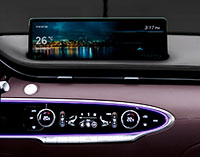
Further up the range, the $63,000 GV70 2.5T Prestige AWD includes a Sport Appearance package featuring metal foot pedals, upscale Nappa leather upholstery with suede-like micro-fibre inserts (in Obsidian Black, Sevilla Red or Ultramarine Blue, depending on exterior colours), a psuede headliner, a driver’s seat power extension for the lower cushion as well as power side bolsters that cinch up in sport mode, Smart Posture Care, Parking Collision Avoidance-Assist Rear (PCA-R), and Remote Smart Parking Assist (RSPA).
For $68,500, the GV70 3.5T Sport AWD trim line combines 2.5T Advanced AWD features with the larger, more powerful engine, as well as some of the just-noted Prestige items like the Sport Appearance package, HUD, power seat cushion extension, bolsters and Smart Posture Care, Lexicon audio system, and 115-volt power outlet, not to mention 21-inch alloys, special aluminum sports trim, enhanced monobloc brakes, an improved Electronic Control Suspension with Road Preview, plus Sport leather seating.
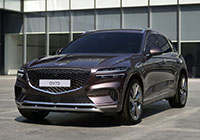
Finally, $75,500 GV70 3.5T Sport Plus AWD trim adds an electronic limited slip differential, a bigger 12.3inch 3D TFT LCD digital instrument cluster, carbon fibre interior trim, plusher Nappa leather upholstery with stitched quilting (in all the same colours as Prestige and Sport trims), a micro-fibre headliner, and laminated acoustic rear door glass, plus the previously-noted surround parking monitor, BVM, PCA-R, RSPA, and rear sunshades. Of note, this segment’s most affordable Cadillac XT5 reaches the same price point when fully optioned, as do most of the others.
Together with the premium finishings, arguably attractive design, no shortage of features and impressive performance numbers, Genesis provides owners with at-home/work valet pick-up and drop-off concierge service, complete with a complimentary courtesy vehicle, when complimentary scheduled maintenance or other repairs are required during the first five years of ownership, or the SUV’s first 100,000 kilometres of use.

On top of this, GV70 owners benefit from Genesis Connected Services featuring map updates and more for the extent of the SUV’s five-year comprehensive warranty (with an unlimited km extension for map updates and roadside service). The five-year or 100,000-km comprehensive warranty is an entire year longer, and an average of 20,000 km greater than most premium competitors’ comprehensive coverage, plus it’s an additional two years or 40,000 km better than the majority of competitive powertrain warranties.
Still, the compact luxury SUV market is deep with capable offerings, giving Genesis’ newcomer big challenges to overcome. How it’s received is anyone’s guess, but we’ll be certain to report on its success after it’s been around long enough to do so, and of course we’ll review it as soon as a test model becomes available.
For now, take note that Genesis is offering the 2022 GV70 with factory leasing and financing rates from zero-percent, as seen on our 2022 Genesis GV70 Canada Prices page. You can find out about deals like this by being a member of CarCostCanada, as well as gain access to dealer invoice pricing on any model currently sold new in Canada. Find out how the CarCostCanada system works now, and be sure to download our free app from the Google Play Store or Apple Store, in order to pay the least amount possible for your next new car.
Story credits: Trevor Hofmann
Photo credits: Genesis

